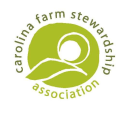Originally published 8/2/2010
I thought I would start my first blog talking about community gardens in North Carolina, and more specifically, around the Triangle area where I live. As I travel further, I will include additional posts on gardens and sustainable farms.
Community gardens are not a new idea and they never really disappeared totally. They are simply in a phase of rediscovery for many communities around the US. Pamela Price has written a brief history of community gardens at http://knol.google.com/k/the-american-victory-garden-past-present# which takes a look at the history dating back to the 1600’s in England and I found this useful to understand some of the concepts still in use today.
But community gardening goes back much further. Many early civilizations had some sort of community farming in addition to foraging and hunting to sustain growing populations. The differences between community and allotment gardening blur over time. Any garden today can offer both opportunities in the same space pretty easily with simple land management and a good overall design.
American history allows us to trace back recent community gardening to WWI when the government recruited people to help grow food in “Liberty Gardens”. It was considered your personal contribution to the war movement to help provide food for yourself and your community members that could not provide for themselves.The government encouraged people to use canning and drying methods to store food and become self-sufficient for longer periods of time when commercial food might need to be sent to the war front. In the 1930’s the WPA (Work Project Administration) hired masses of unemployed to work in “Relief Gardens” to raise the spirits of the population as well as provide food for the community during and after the depression. And then in the 1940’s as we entered WWII, the government promoted “Victory Gardens” to reduce fuel consumption and preparation for diminishing food supplies caused by the war. By 1944 these “war gardens” produced upwards of 40% of the fresh vegetables for families and helped offset the larger food production that was used to supply the war efforts. As time went on and people returned to work and industry flourished after the war, companies took on the role of preserving food for long term storage and gardens diminished as did personal time to tend to them. Authors like Laura Lawson (City Bountiful, A Century of Community Gardening in America), Thomas Lyson (Civic Agriculture: Reconnecting Farm, Food, and Community), and Mark Winne (Community food security: A guide to concept, design and implementation), among many others, have written about community gardens and their potential usefulness in times of scarcity.
Allotment gardens are a little different. They are considered to be plots that are rented out to individuals to plant whatever they like and keep all of the produce for themselves. The cost of the plots is normally very nominal but this is changing in some areas where privatization has occurred. http://www.treehugger.com/files/2010/01/privatization-allotment-gardening.php Allotment gardening differs from what is referred to as “sharecropping” where part of the land owner provided seed, animals and equipment as well as credit for the labor force. A good reference of articles can be found at: http://www.encyclopedia.com/topic/sharecropping.aspx . Allotment gardening is still prevalent throughout urban areas of Europe and highly populated areas of the US where open land is unavailable except through private, faith-based, and government efforts.
While viewing some of the existing community gardens in the Piedmont NC area, I found that mixing the use of the land provided both an aesthetic and useful quality to the site. Combining mature hardwood trees with fruit trees provides shade and seating areas to rest as well as places for birds to nest. Well-laid paths provide exercise for non-gardeners and highlight the beauty of the land. Open borders of fruit bushes provide easy access to snacks and a barrier for sound and lights at busy street corners. Low fencing can provide support for grapes, a place to stake medium vegetable plants and a method to keep out little critters who would demolish a harvest. Taller arbors can be used to stake taller plants or create canopies of shade where there need to be work areas to clean produce in the field or set seed trays. A division of space for allotment plots and a general garden provides community food and individual harvests of special produce. And if there is room, a secure play area for children allows the whole family to participate in the gardening experience in some way. There’s a great list of gardens in NC that you can look up and visit, but this is just a tiny fraction of what is out there: http://nccommunitygarden.ncsu.edu/
In my own area, some towns are really still struggling with zoning codes and understanding the relative importance of these spaces for their communities. They are multifunctional and don’t fit in neat categories. They have personalities that fit the surrounding area. In an optimum situation, they can include space for educational programs, food storage, farmers’ markets, exercise and play. These spaces can join people with new opportunities that might not otherwise meet. They can challenge our bodies as well as our minds in their infinite design and purpose.
Follow me as I tour and post my comments and pictures and maybe you will be inspired to work or start a garden in your neighborhood. Initially I will be writing about three very different gardens in Durham and Chapel Hill. One is at a private school, another is at a church and the third is at a non-profit center. Each has a different set of goals and methods of gardening but they all share the gift of food and love of service to their communities.









